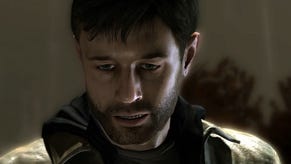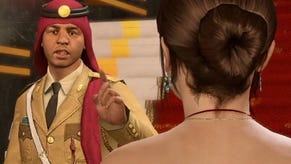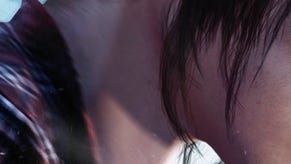Tech Analysis: Beyond: Two Souls
Digital Foundry's assessment of Quantic Dream's stunning achievements in real-time rendering.
Four gigabytes for 5.5 minutes of footage. When Sony delivers a video game trailer in Apple's ProRes intermediate format, it's great news for Digital Foundry, because we're seeing the game's visuals running in a virtually lossless state; a quality level pretty much on par with the code running locally. Every pixel, every shader, every filter - it's all there in a pristine, precision format - and like Patrick Stewart in Extras, we can see everything. Sony is inviting a higher level of scrutiny and it has confidence that Beyond: Two Souls will not fall short.
Quantic Dream's David Cage assures us that everything we - and you - have seen with Beyond thus far is all real-time, running on PlayStation 3 hardware. Taking him at his word, this represents a phenomenal technical achievement. What impresses the most isn't just that the rendering technology is so impressive, it's that there's a uniformly high level of consistency in almost all aspects of the presentation. Everything has a profoundly natural look, virtually nothing sticks out or jars as overly artificial.
Two central pillars define the experience revealed thus far: characters and lighting. What Quantic Dream has achieved with its actors is simply sensational; the firm has managed to move the quality of the performance capture seen in games like Uncharted to the next level of fidelity and has made good on its earlier promises of matching the facial mocap quality of LA Noire with more natural body animation.
Moving onto the definition of the characters themselves, we're seeing a new level of rich detail in the models. Certainly in facial terms, the quality of the modelling is untouchable. It's not just about the poly count; close-ups of the police lieutenant show exceptionally well-rendered hair - something that may not sound particularly important but is actually hugely challenging for any lifelike human rendering. The character's beard has an authentic texture and substance to it to the point where you can almost pick out each individual strand of hair, with no discernible aliasing. Technological limits are evident, however: you'll note that all of the characters shown in the trailer have short hair; realistic rendering of longer strands would simply be too much to handle with this level of fidelity.
"Perhaps the most impressive thing about Beyond: Two Souls is how consistent every element of the presentation is: just about every effect is finished to an exceptionally high standard."
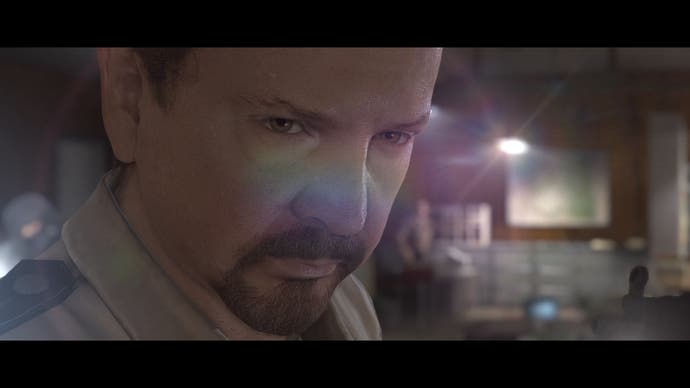
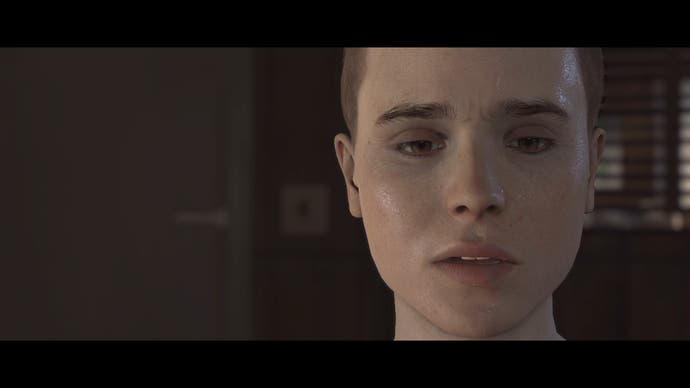
Away from the construction and animation of the characters, it's the lighting that truly makes the characters in Beyond literally shine. A lot of important work is being done on bringing offline photo-realistic skin rendering techniques into real-time, but what we see in Beyond is the best practical realisation we've yet encountered. Despite some great work on skin shaders in titles like the Mass Effect games, there's always been a sense that the characters are dry, cold, unnatural stone-like figures. Beyond takes things to the next level: skin looks flexible, natural, translucent to a certain extent - moist, even.
Over and above that, perhaps the most outstanding achievement of the technology is the way that light reflects and glints in the eyes of the characters. Even on the games that have pushed back the barriers of character animation (for example, Uncharted and LA Noire), the eyes of the actors just haven't looked "right". Beyond addresses this adeptly, giving a new level of nuance to the performances we see.
Presumably, the scene chosen for the bulk of the Beyond trailer was hand-picked for precisely this reason. Less is more in Ellen Page's performance: she is communicating much of her state of mind with her eyes, and the fact that the technology is able to accurately reproduce and render this in real-time on a current-generation console is breathtaking. Unfortunately the impact was diminished somewhat in the E3 presser auditorium where Sony essentially revealed Page's participation in the game by having her sit there saying very little and doing virtually nothing for several minutes.
"Bloom and depth-of-field with bokeh are also convincingly rendered in the outdoor scenes, smoothly transitioning from one point of focus to another and looking quite sublime."
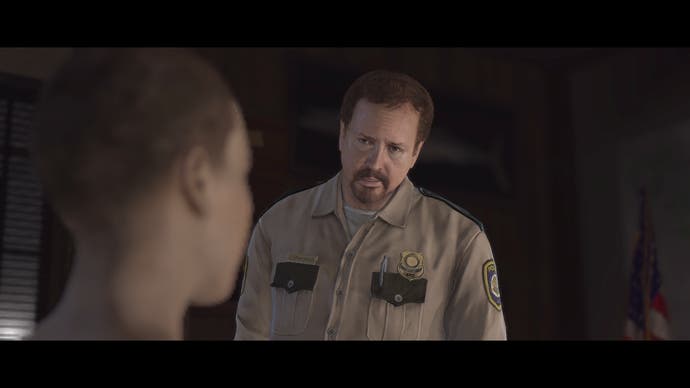
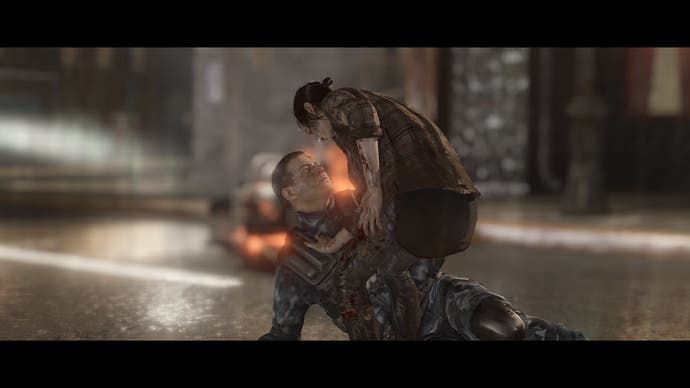
Outside of the initial scene in the trailer, the action elements from the b-roll clips give us a greater idea of how Beyond looks during what appears to be gameplay (this is Quantic Dream - we can't really be sure). The darkness we see and the use of dynamic light sources is a little reminiscent of Alan Wake, though there appears to be a mixture of real-time light and shadow along with indirect effects (where light has "bounced" between objects) which are most likely pre-baked into the environments.
Bloom, and depth-of-field with bokeh are also convincingly rendered in the outdoor scenes, smoothly transitioning from one point of focus to another and looking quite sublime. That said, the blurring effect in the indoor scenes was rather more pixellated, and the only real low point we could pick out in terms of overall image quality in the footage we have available.
Materials and other effects work are also generally superb: of special interest are the rain effects in the gameplay footage, and the impact on other elements in the scene. Rain hitting the glass of the train is impressively handled with a high-precision effect, wet shaders on the ground materials are natural and convincing, while the rendering of Ellen Page's (longer!) hair, skin and clothing after being drenched in the downpour is of an equally high standard. Camerawork, motion blur and overall direction also look second to none, while Sony's MLAA tech appears to be doing a sterling job at keeping the jaggies at bay.
"Based on the b-roll we've seen thus far, Beyond's Achilles' Heel is frame-rate - performance is highly variable with powerful light sources in particular causing obvious challenges to the engine."
The overall impression is that Beyond looks to be setting a new standard for what is possible on current-generation consoles. In many ways it looks too good to be true, to the point where quite rightly you may be asking if this is real, and if so, what compromises are in effect? A forensic look at the footage available does indeed suggest that it is all generated in real-time by the PlayStation 3, and that stands to reason as it does seem to be the case that frame-rate is rather choppy in the gameplay materials released so far. The arrival of powerful light sources in the scenes does seem to see frame-rate tumble.
This can be explained partly by the fact that Quantic Dream has implemented v-sync in the material. On the plus side, this eliminates the heavy tearing that blighted Heavy Rain's image quality but on the minus side, dips in performance are that much more noticeable. The analysis on this page should give you some idea of how the b-roll footage Sony has released thus far plays out. Updated: Eurogamer staff at E3 confirm that performance remains an issue on the code they've just seen, and that v-sync is disabled in the latest demos, resulting in a lot of tearing.
Over and above that, the biggest question mark hanging over Beyond is just how it actually plays. In the here and now, Quantic Dream doesn't appear to want to talk about the actual interaction between player and its product - the defining factor that separates a video game from a movie and the whole point of the exercise, if you will. After Heavy Rain and its heavy use of what many people would classify as quick-time events, this is perhaps the only element of the E3 presentation that disappoints. Beyond looks set to bring new levels of fidelity and expression to character and storytelling, but to what extent the player is actually involved remains, for now, an almost complete unknown.





